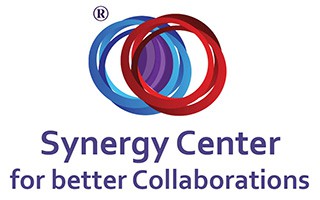Synergy method is a necessary but ‘painful’ process, and it’s important to know when it’s appropriate to apply it. It’s easier said than done to achieve and maintain synergy, because it requires lots of time and effort from you as a manager or owner of an organization.
Synergy isn’t something that you can achieve overnight – it requires sacrifice. Just as it’s painful to treat a disease, so is assimilating the language of synergy. Most managers and business owners aren’t equipped well enough to deal with situations, which require synergy approach.
It could be that your organization’s undergoing a merger or acquisition, assimilating a rollout of new software, changing the board, directors or management, or even changing procedures, technology or culture.
In such situations, you require guidance — work tools, methods, models and concepts — to wade through the murky and turbulent waters, which characterize the delicate processes of change. One of the important tools to diagnose “organizational illness” is the self-completed questionnaire.
Let’s learn how you can benefit from using the self-administered questionnaire.
Self-diagnosis of Interactive Forms
It’s important to note that at any given moment in your organizations, all interactive forms exist simultaneously, and your perception of their existence isn’t necessarily same as your colleague’s. You can use a questionnaire to diagnose their occurrence on your own. This diagnosis can inform your development of solutions to improve interactions in your organization.
Assessment of Workplace Interactions
Whoever designed the questionnaire didn’t intend it to diagnose interactions, which occur at interpersonal level, but in the workplace. You’ll learn more about this when diagnosing the organizational procedures.
Prerequisite for use
There are necessary conditions, which you must meet in order to use the questionnaire. First off, you must have read and internalized the content of Dr. Rami Ben-Yshai’s book Organizational Synergy: A Practical Guide – Recalibrate Interactions to Achieve Peak Engagement, Productivity & Profit. Second, Dr. Ben-Yshai’s questionnaire has copyrights. To avoid violating them, use the questionnaire for analysis of interactions between employees and for personal needs.
The Questionnaire’s Adaptable to Organization’s Reality
Just as reality differs between entities, so is worldview, perception or culture. Synergy requires entities to come together (“fuse”) to create a completely different reality, but, which must be shared. The level of questionnaire compared to the types Dr. Ben-Yshai uses is minimum at best, although it guarantees you optimum results, especially if you’ve so many employees, and the questionnaire is adaptable to the reality of your organization.
Periodic Updates
The Synergy Center updates the questionnaire periodically. If, in any case, you’d like to have an updated version, you can access it in a downloadable A4 format at www.ben-yshai.com.
Questionnaire Petitions
When filling out the questionnaire, it’s necessary that you provide examples of every kind of petition, which relate to the questionnaire. Avoid stating that, “everything works synergistically among us”. Such statements are unacceptable, because, in reality, they are a cover-up for deeper problems, which an investigator needs to uncover.
Perception of Interactive Forms in Percentage
It’s possible to rate your feelings or perception about interactive forms occurrence in percentage. However, the questionnaire won’t allow you to do that till you have internalized the examples that have been provided. If you proceed to mark the percentages first without giving consideration to the examples, that’d be an incorrect move, and it would serve you no good.
Remember that your perception of interactive forms isn’t objective. It’d be much easier for you to rate your feelings once you’ve reread and compared all the examples. And because the percentages are a mirror of your feelings about interactive forms – they are subjective; not precise.
They’re imprecise, because they don’t need to — you can still map out their spread very well, despite imprecision. The percentage scale often ranges between 0 and 100, but adjustment for deviations can result in negative percentages and positive percentages above 100. Nonetheless, the 0 to 100 scale makes it easier to draw up comparisons between questionnaires.
That’s About it!
A self-completed questionnaire is one of the most important tools you require as a manager, consultant or owner of an organization, because it helps you to diagnose interactive forms and map out them. Your feelings or perceptions of interactions are subjective, so you don’t have to give precise percentages.





ergfir nolikz
9 Jan 2019The heart of your writing whilst appearing reasonable originally, did not really settle properly with me after some time. Someplace throughout the paragraphs you actually managed to make me a believer but only for a very short while. I still have got a problem with your leaps in assumptions and you would do well to fill in those gaps. If you can accomplish that, I could certainly end up being fascinated.
rami
12 Feb 2019Thanks. It’s a great challenge. Please be more specific – and I’ll feed you back.